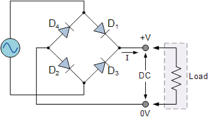I am not quite sure what Phycologists say about imaginary friends, whether it is a sign of a child’s creativity, or early signs of madness. It might be the second when you still have an imaginary friend when you are 35! But I find myself spending quite a lot of time in the car these days and my imaginary friend has become SIRI. I have a love-hate relationship with my friend SIRI, because I love him/her (he doesn’t seem to know what gender he is, even though he has clearly a male’s voice) as he allows me to continue to be productive even when I am driving, and I hate him because when I try to dictate a message to a colleague, my wife, etc… I usually have to change it an average of a million times, as SIRI twists my words and slots in stuff I have never said and that does not make sense in the sentence I am constructing. In fairness, it could be my, still inevitable, Italian accent that confuses my friend, but it is still quite frustrating!
Anyway, today I thought I would dedicate a post to SIRI as he has been a really good friend lately. Last night I was on my way home and I suddenly realised I didn’t know what I was doing today, so I asked him to read my calendar events for today and he complied very diligently. Today he was a life saver again, because on my way to a meeting (actually about 10 min from the venue) I received a phone call saying that the meeting was cancelled due to bad weather. Slightly annoyed by the sudden news I realised I was only one star from my next reward at Starbucks, so I turned my car around and asked SIRI: “Find Starbucks Coffee near me!” Within seconds SIRI gave me a choice of two relatively close Starbucks and he asked me if I wanted him to phone the place nearest me, or get directions to get there.
I am writing this post from this very Starbucks and enjoying a latte. So, well done SIRI! It was a pleasure to talk to you today. Thank you for keeping me company and for being so helpful!
If you are wondering what this has to do with education, here are a three ideas you could use with your classes:
1) Get your ESL students to communicate with SIRI and see if they can get themselves understood by him. This should improve their pronunciation.
2) Get learners to write messages, notes and emails by dictating to SIRI. This is quite difficult, because there is not much thinking time and it help learners appreciate how important punctuation is. In fact, SIRI reads your messages back to you before sending them, so if punctuation is wrong, you hear some really weird stuff coming out.
3) Get learners to have a conversation with SIRI and see what his limitations are. This could be a nice introduction to computing and should help learners appreciate how difficult it is to get computers to behave in a human way. There are many things SIRI still can’t do and if Apple hasn’t cracked it yet, it means we are still a long way away from it! Basically, this could show learners that computers, and, therefore, computer programs need very specific sets of instructions. Every eventuality needs to be “spelled out” to them, or they will not be able to respond.
I hope you enjoyed this short post. How have you used SIRI in your classroom?

















